Part of Rotterdam is a retrospective on the work of the harbour painter Sasja Hagens (Utrecht 1973). Her oeuvre is an ode to the city and port of Rotterdam, and her art become now a colourful book in which the River Maas forms the basis of almost every painting. In her work ships come and go, tankers are clean and cranes appears as tall skyscrapers, while construction sites in the center are transformed into stately avenues. A storytelling that aims to show the “beauty” of this landscape, too often neglected and looked at with suspicion and distrust.
Ports are, on the other hand, places full of life, work, sacrifice but also rich of opportunities. Places that tell of distant territories, bringing together people of different origins and cultures, speaking diverse languages. They are a melting pot and as such they are an inexhaustible source of inspiration. So Sasja Hagens sees them and translates them on the surface of the canvas, filling them with the colours taken from the hulls of the ships, or from the containers and animating them with the liveliness of the people who inhabit them. With this book, Hagens provides insight into her perspective, her message as well as her process and working method.
Her art appeals to many Rotterdammers. The City Hall and the Maritime Museum acquired her work. Lately ESPO – European Sea Port Organisation chose her work for its annual Port-City Societal integration award and therefore many European ports can enjoy her art.
Till September 2022 the Museum Boijmans van Beuningen & Maritiem Museum Rotterdam are exhibiting Hagens: ‘Maritieme Meesterwerken’ / ‘Maritime Masterpieces’.
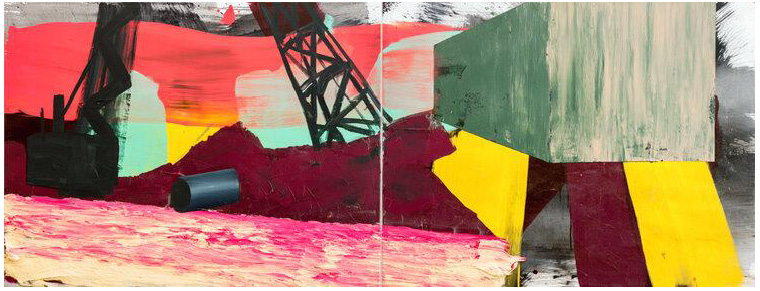
Unbounded | Diptych | 140 x 340 cm | Acrylic paint and emulsion on canvas. (© Sasja Hagens).
The word to the Author
Marta Moretti – Since when did you become interested in ports and ships?
Sasja Hagens – At the origins of my fascination with large vessels, there is the wooden sailing ship on which the Hagens family (composed of father, mother and 4 children) made trips on the Haringvliet and the Veerse Meer. One day the Waratje was heading for Breskens. When crossing the Western Scheldt, a busy waterway where sails have to be lowered, and which connects openly to the North Sea, we were lifted high on a wave and the sailboat’s engine failed. We suddenly found ourselves adrift in perhaps the busiest shipping channel in Europe. I had never seen waves this high before. Suddenly, ridiculously large container ships passed us by slowly and relentlessly close. I was forever enchanted. For good. This was a defining moment for me as a young girl. My holiday was perfected.
Marta Moretti – What was the public reaction when you started painting the ports?
Sasja Hagens – When I painted the Port of Rotterdam for the first time twenty-five years ago, I received somewhat compassionate reactions. People still sometimes ask me why I’ve spent so much time painting ports, such an obvious theme. But their size and industrial quality light the fire in me. I look at myself as a maritime artist.
Marta Moretti – We usually look at ports as gray, dirty and hard work places… you have instead brought the brightest colours to this landscape in your work…what is the meaning of this joyful image?
Sasja Hagens – I’ve always felt comfortable in the port. Too many people from Rotterdam have no idea what is going on in Europoort and on the Maasvlakte. I rarely encounter proud feelings about one of the largest ports in the world. The port is often in the news in a negative sense. And then it’s about pollution, fire or other problems.
With my paintings, I want to show how beautiful and colourful those harbour landscapes are. Sometimes I stand in a dry dock alongside such a monumental colossus. Then I look in amazement at this pistachio green algal skin, full of rust stains that have been painted over with red lead. I find such an explosion of colour humorous, there is nothing to improve. I’m also fascinated by the huge size of the Dutch Delta Works and the Zeeland Bridge. Man is small and builds big things in an attempt to stop nature for a while. That gives me a romantic feeling.
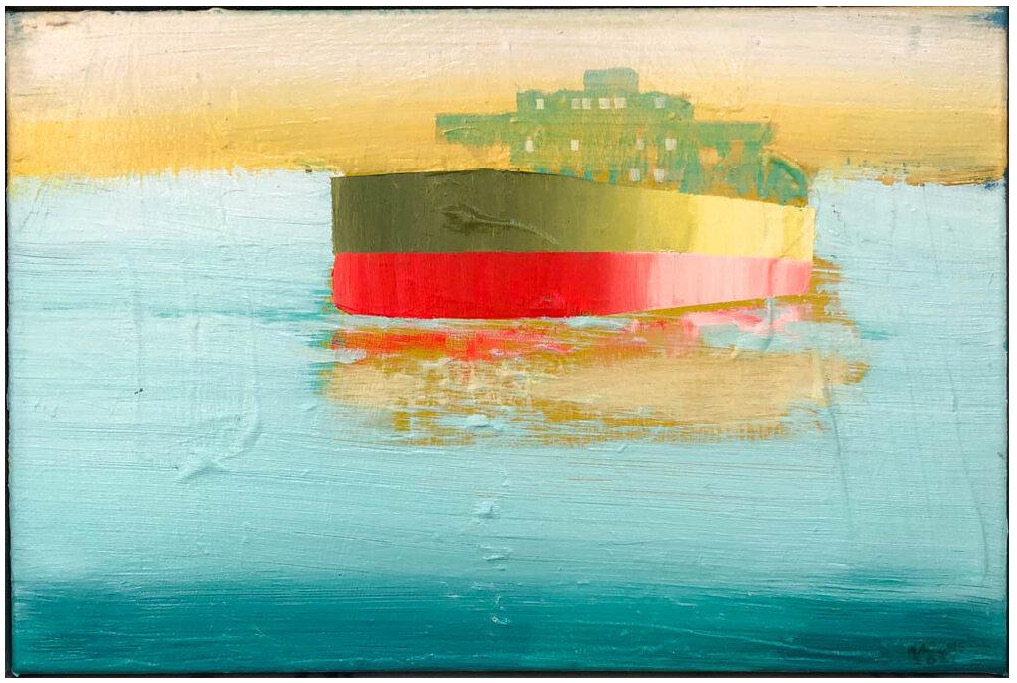
Rotterdam #03 | 40 x 60 cm | Acrylic paint and emulsion on canvas (aluminium framed). (© Sasja Hagens, 2021).
Marta Moretti – How can you explain your artistic technique?
Sasja Hagens – I use the photos taken in the port as a starting point for my paintings. Then, in my studio, I turn reality to my liking. So if there is a crane on the left that compositionally looks better on the other side, I paint it on the right. I mix the acrylic paint with emulsion, sand, and mud, in order to be able to apply the monumental forms richly on the canvas.
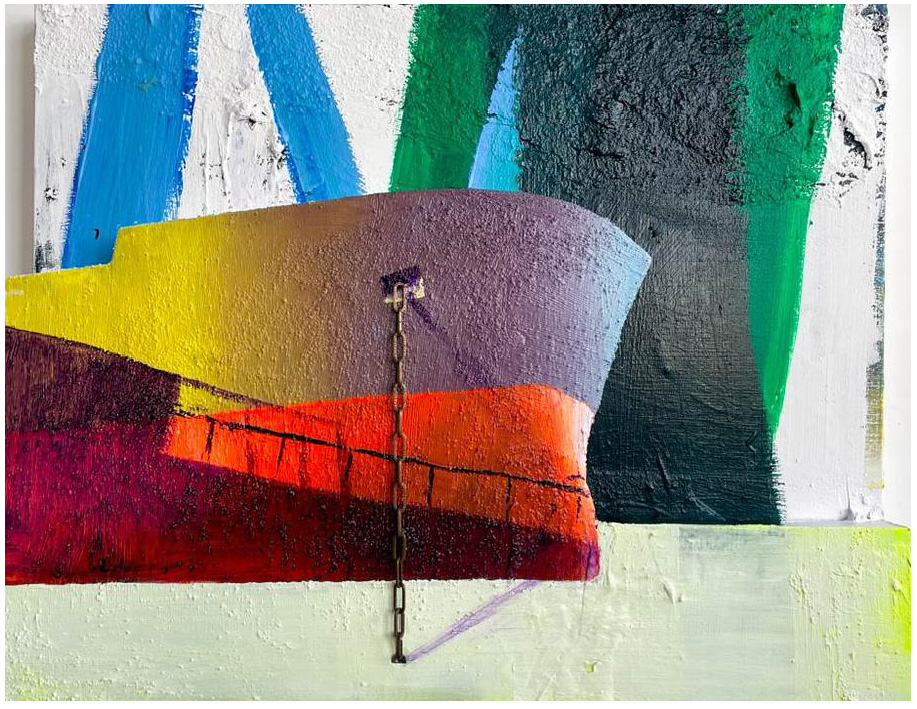
Yellow Ship | 80 x 100 x 10 cm | acrylicpaint sand emulsion styrofoam steel cable on canvas. (© Sasja Hagens, 2022).
Marta Moretti – What has been the impact on your career of being selected for the ESPO Award?
Sasja Hagens – It was a great honor and this certainly helped me a great deal to being known more widely. But when Saipem 7000 (2006), a large canvas of an oil platform being cleaned in a dock, was selected last year for the exhibition Maritime Masterpieces compiled by Museum Boijmans Van Beuningen, it was a milestone for my career. At that exhibition in the Maritime Museum, I suddenly find my work hanging next to Willem de Kooning, Frank Stella, and Claude Monet. But, at the same time, I was somehow shocked by the maritime paintings of my predecessors. There are quite a few sombre paintings in the exhibition. I hear that young people often appreciate the atmosphere of my painting instead.
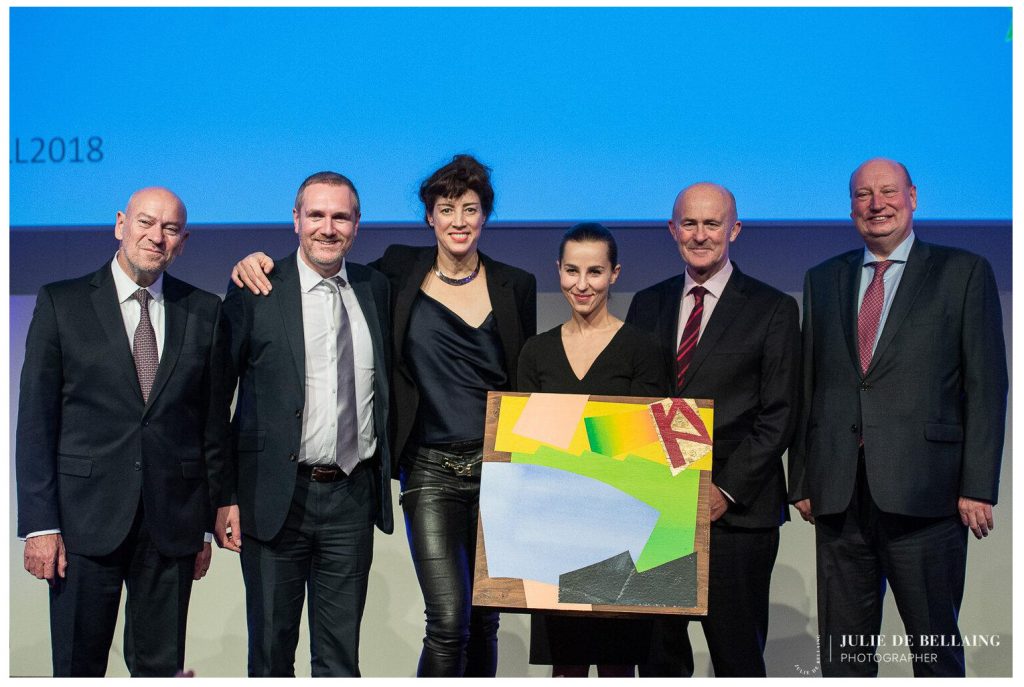
ESPO Award 2019 won by the Port of Dover. (Photo by Julie de Bellaing).
Marta Moretti – What is the next step?
Sasja Hagens – In my latest series I focus on the manmade landscape instead of industry itself. I paint a rapid changing world in which humans literally move mountains and rivers.
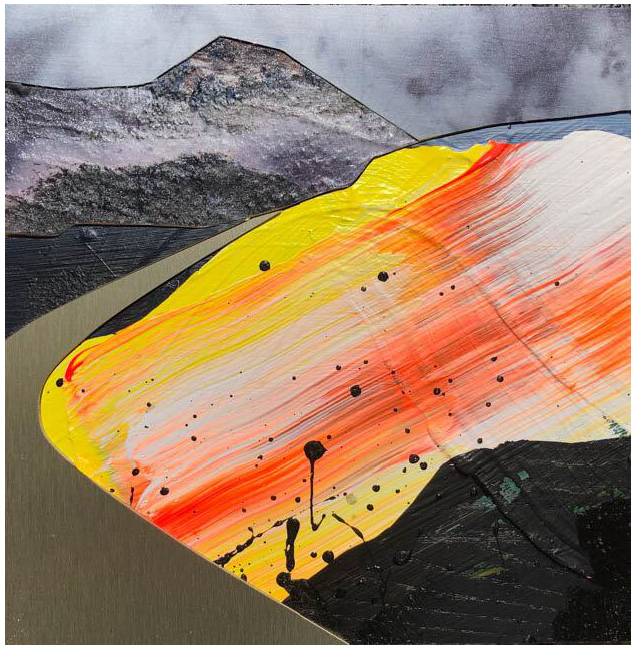
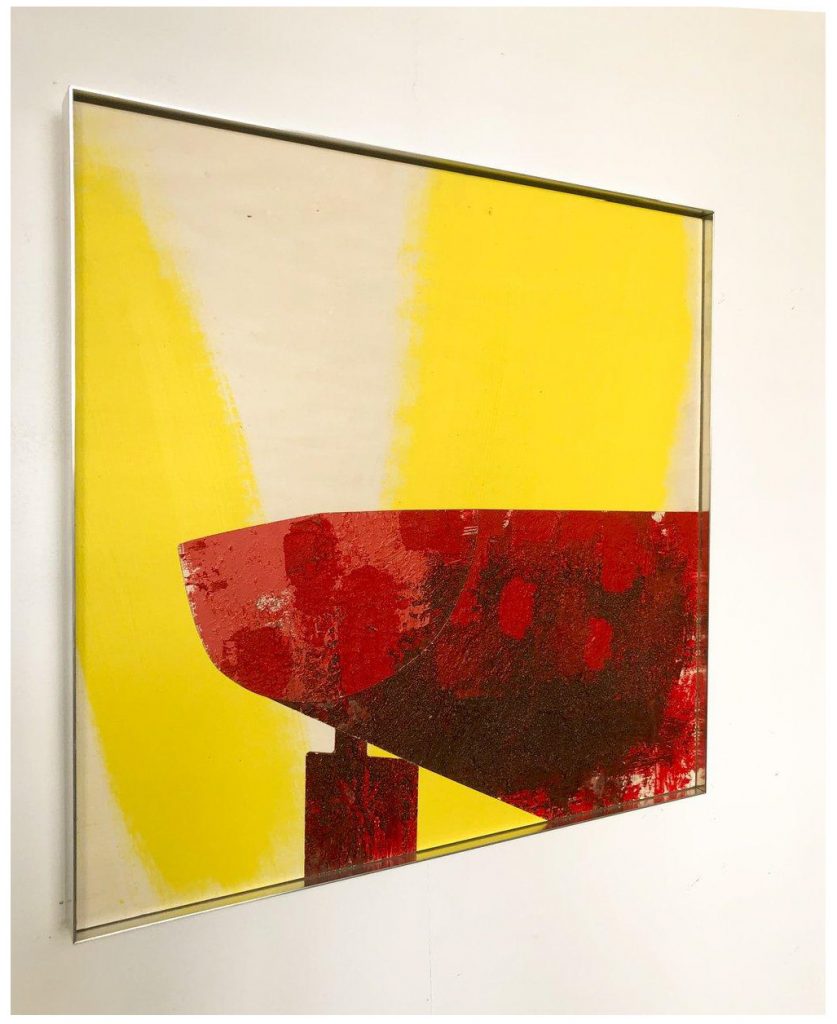
From left to right: Ccl2020 #6, acrylic paint, Brass, emulsion, acid dye, silk, sand | 22 X 22 Cm | Snoek. (© Sasja Hagens, 2020). Eerste Petroleumhaven | 60 X 60 Cm | Acrylicpaint sand emulsion wood Cnc Milled|Aluminium Framed. (© Sasja Hagens X Saar Snoek, 2021).
Author Biography
Sasja Hagens
Sasja Hagens lives and works in Rotterdam. She started her art education in 1991 in Utrecht at the School of Arts. In 1992 she was selected for the Royal School of Arts in The Hague (in field Drawing & Painting), where she graduated in 1996. With strong colours and daring compositions, Sasja Hagens gives her own interpretation to the themes of harbourscapes, industrial and future landscapes. Hagens’ focus is on future landscapes now. Lately, she is developing a new future landscapes-series about the tantalising interaction between wild nature and industrial influences. Her paintings are in collection of (a.o.) Maritiem Museum Rotterdam, City Hall Rotterdam, ECT Rotterdam, Arcadis and Deloitte The Netherlands. Her work is also widely exhibited, for example during a big solo exhibition at Duolun (MOMA) in Shanghai, Habitare in Helsinki, Oblast Art Museum Kemerovo (Russia), Museu Maritim in Barcelona and Gallery Neuberg Arts Hong Kong.